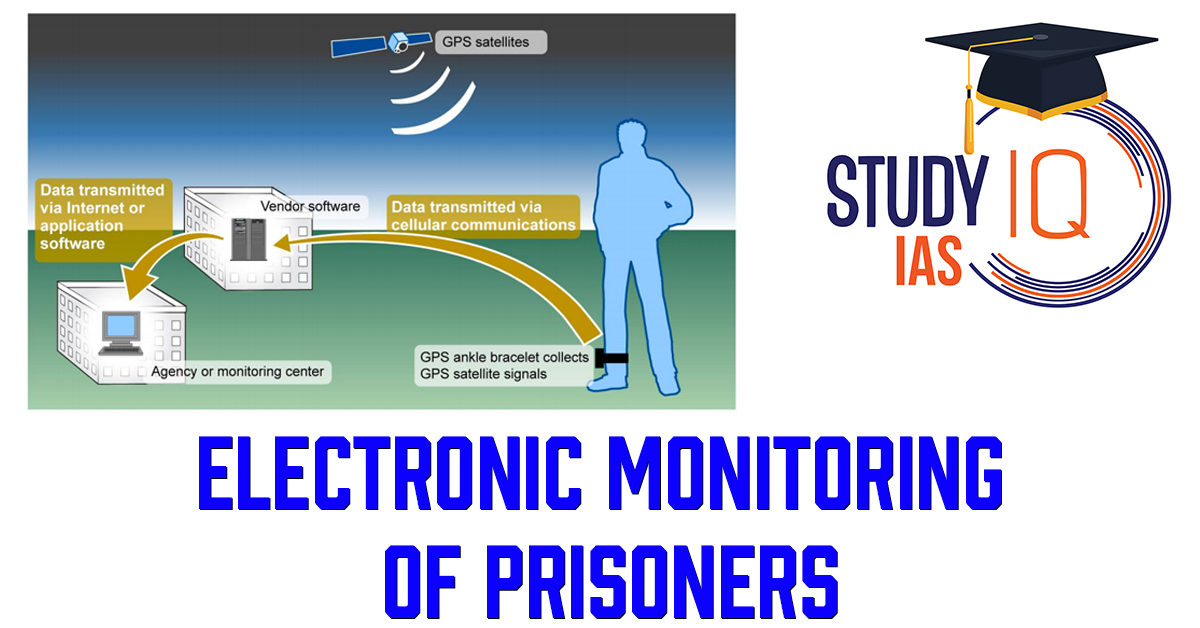Table of Contents
The report “Prisons in India: Mapping Prison Manuals and Measures for Reformation and Decongestion”, released by President Droupadi Murmu highlights overcrowding in Indian prisons and proposes measures for decongestion, including electronic tracking of prisoners. The report, authored by the Supreme Court’s Centre for Research and Planning.
Benefits of Electronic Tracking
- Cost-Effectiveness: The implementation of electronic monitoring could significantly reduce costs associated with incarceration.
- Eg., Maintaining a single undertrial prisoner in Odisha costs approximately Rs 1 lakh annually, while the cost of an electronic tracker is estimated to be between Rs 10,000 to Rs 15,000. This represents substantial savings for the state.
- Reduction in Overcrowding: Indian prisons had an occupancy rate of 131.4% as of December 2022, with 573,220 inmates compared to a capacity of 436,266 (according to statistics by the National Crime Records Bureau (NCRB)).
- Electronic tracking could allow low and moderate-risk undertrials to remain in the community while being monitored, thereby alleviating prison overcrowding.
- Improved Rehabilitation: By allowing undertrials to stay in their communities, electronic tracking facilitates continued education and employment opportunities.
- This support is crucial for maintaining family connections and aiding reintegration into society.
- Enhanced Monitoring: Electronic tracking provides a reliable means to ensure compliance with release conditions.
- This can help reduce the risk of absconding or re-offending while maintaining oversight without the need for constant physical incarceration.
- Administrative Efficiency: The use of electronic trackers could reduce the administrative burden on law enforcement agencies by minimizing the resources needed to monitor individuals on bail or parole.
Challenges Associated with Electronic Tracking
- Privacy Concerns: The use of electronic monitoring raises significant privacy issues.
- Continuous surveillance may infringe on individuals’ fundamental rights, as highlighted by recent Supreme Court rulings that deemed certain tracking conditions as violations of privacy.
| Supreme Court Ruling (July 2023) |
| Struck down a Delhi HC bail condition requiring location tracking on Google Maps, citing violations of privacy under Article 21. |
- Technical Reliability: The effectiveness of electronic tracking systems is contingent upon the reliability of technology.
- Issues such as device malfunctions or signal loss can undermine monitoring efforts and lead to potential failures in compliance enforcement.
- Human Rights Risks: There is a danger that electronic monitoring could be misused or overused, leading to human rights violations.
- Stigmatization: Visible devices such as ankle monitors lead to social isolation and shame.
- Prisons in Indiareport highlighted that these devices lead to psychological distress, including anxiety and depression
- Cost Implications: While initial costs may be lower than incarceration, establishing a comprehensive electronic tracking system requires significant investment in technology and training for law enforcement personnel.
- Impact on Marginalized Groups: Scheduled Castes, Scheduled Tribes and Other Backward Classes backgrounds are overrepresented in prison populations and there is a concern related to systemic inequities.
- Potential for E-Carceration: Critics argue that electronic monitoring could simply extend incarceration into the community, creating an environment of constant surveillance akin to “e-carceration.”
- This concern is particularly relevant given that marginalized communities are often overrepresented among those monitored.
| Story of Electronic Monitoring in the US |
What were the Challenges Arised?
|
Key Recommendations from the Report
- Limited Application: Suggested for grave and heinous crimes where the accused has prior convictions.
- Aligns with the 268th Law Commission Report, which advocates legislative amendments for proper regulation.
- Safeguards and Guardrails: Ensure privacy protection and obtain informed consent from inmates.
- Devices should not exacerbate inequalities or stigmatization.
- Government Responsibility for Costs: Avoid passing financial burdens onto monitored individuals to prevent penalizing economically vulnerable populations.
- Balanced Use: Tracking should complement judicial processes, not replace or undermine them.


 GPS Spoofing and Its Impact in India: A ...
GPS Spoofing and Its Impact in India: A ...
 Amrit Gyaan Kosh Portal: A Comprehensive...
Amrit Gyaan Kosh Portal: A Comprehensive...
 UpLink Initiative: Launched by World Eco...
UpLink Initiative: Launched by World Eco...





















